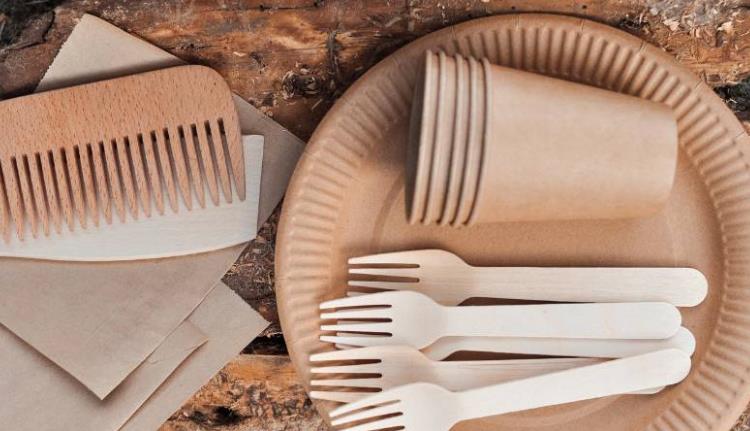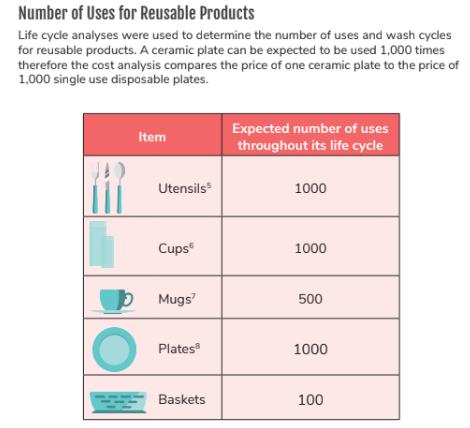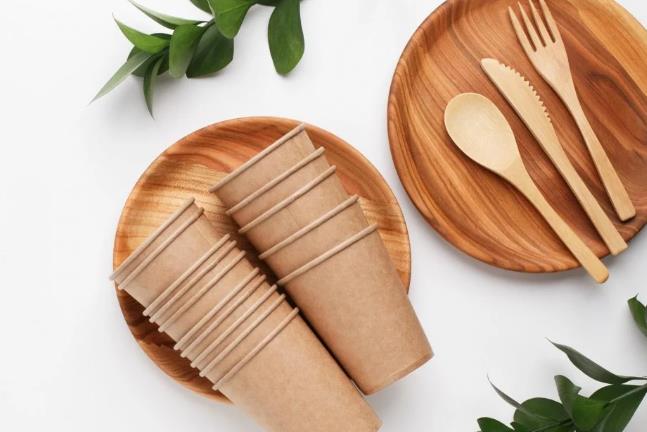
Content Menu
● Understanding Disposable Plates
● Can You Reuse Disposable Plates?
● Environmental Impact of Disposable Plates
● Practical Tips for Reusing Disposable Plates
● The Debate Over Paper vs. Plastic Plates
● The Cost Factor
● Sustainable Alternatives
● Conclusion
● FAQ
>> 1. Are all disposable plates recyclable?
>> 2. Can I wash and reuse paper plates?
>> 3. What types of disposable plates are best for reusing?
>> 4. How should I clean reusable plastic dishes?
>> 5. What should I do with damaged disposable plates?
● Citations:
In today's fast-paced world, disposable plates have become a staple for many households and events. They offer convenience, reduce cleanup time, and are often seen as a hygienic option for gatherings. However, the question arises: Can you reuse disposable plates? This article explores the topic in-depth, discussing the types of disposable plates available, their environmental impact, practical tips for reuse, and much more.

Understanding Disposable Plates
Disposable plates are designed for single use, but many people wonder if they can be reused without compromising hygiene or safety. This section will explore the different types of disposable plates and their characteristics.
Types of Disposable Plates
- Plastic Plates: Made from materials like polypropylene (PP) and polystyrene (PS), plastic plates are durable and can often withstand heat. They are suitable for various foods but may not be eco-friendly unless recycled properly.
- Paper Plates: Often made from recycled paper or sustainable materials like sugarcane or bamboo, paper plates are biodegradable but may not hold up well with wet or heavy foods.
- Foam Plates: Lightweight and inexpensive, foam plates are not recyclable in many areas and can contribute to environmental waste.
- Compostable Plates: Made from natural materials such as palm leaves or sugarcane, these plates break down in composting conditions and are eco-friendly options.
Can You Reuse Disposable Plates?
The short answer is yes; you can reuse certain types of disposable plates, particularly plastic ones. However, there are important considerations to keep in mind regarding hygiene and material integrity.
Hygiene Considerations
When reusing disposable plates, it's crucial to ensure they are cleaned properly. Here are some guidelines:
- Wash Thoroughly: Use hot water and soap to wash plastic plates. Ensure all food residues are removed to prevent bacterial growth.
- Dry Completely: Allow the plates to air dry completely before storing them to avoid mold or mildew.
- Inspect for Damage: Before reusing any plate, check for cracks or signs of wear. Damaged plates should be discarded as they may harbor bacteria.
Environmental Impact of Disposable Plates
The increasing use of disposable plates has raised concerns about their environmental impact. Here's a closer look at the issues at hand:
Waste Generation
Disposable plates contribute significantly to landfill waste. Many types, especially foam and some plastics, do not decompose easily and can persist in the environment for hundreds of years.
Recycling Options
While many people believe that all disposable plates end up in landfills, some types can be recycled:
- Plastic Plates: If marked with recycling symbols, these can often be recycled. Check local guidelines for specifics on what is accepted.
- Paper Plates: These can be recycled if they are clean and free from food contamination. However, greasy or soiled paper plates typically cannot be recycled.
- Compostable Plates: These should be disposed of in composting facilities rather than regular trash to ensure they break down properly.

Practical Tips for Reusing Disposable Plates
If you decide to reuse disposable plates, here are some practical tips to help you do so effectively:
1. Choose Durable Options: Opt for high-quality plastic plates that can withstand multiple washes. Avoid flimsy options that might break easily.
2. Use Hot Water and Soap: When washing plastic plates, use hot water with a good dish soap to eliminate bacteria effectively.
3. Store Properly: After cleaning, store the plates in a dry area away from direct sunlight to prevent warping or degradation.
4. Limit Reuse with Certain Foods: Avoid reusing plates that have held raw meat or greasy foods unless they have been thoroughly cleaned.
5. Consider Upcycling: Get creative! Old plastic plates can be repurposed into art projects or used as plant trays.
The Debate Over Paper vs. Plastic Plates
The choice between paper and plastic disposable plates often comes down to personal preference and environmental considerations.
Environmental Impact Comparison
| Feature | Paper Plates | Plastic Plates |
| Biodegradability | Biodegradable; decomposes faster | Non-biodegradable; takes hundreds of years to break down |
| Recycling Potential | Can be recycled if clean | Often not recyclable due to contamination |
| Production Footprint | Requires trees; energy-intensive | Made from fossil fuels; high carbon footprint |
| Usage | Better for light foods; may disintegrate with wet items | Suitable for all food types; more durable |
While paper plates may seem like a more environmentally friendly option due to their biodegradability, their production contributes significantly to deforestation and energy consumption. On the other hand, plastic plates are durable but pose long-term waste issues due to their slow decomposition rates.
The Cost Factor
Another aspect worth considering is the cost associated with disposable versus reusable tableware:
- Initial Costs: Disposable plates may appear cheaper upfront since they do not require washing or maintenance.
- Long-Term Expenses: Over time, the costs of continually purchasing disposables can add up significantly compared to investing in reusable tableware that lasts longer.
Sustainable Alternatives
As awareness of environmental issues grows, many consumers are seeking sustainable alternatives to traditional disposable tableware:
- Compostable Tableware: Made from renewable resources like sugarcane bagasse or bamboo, these materials break down naturally without leaving harmful residues behind.
- Biodegradable Plastics: Some manufacturers produce biodegradable plastics that decompose more quickly than traditional plastics while still offering similar durability.
- Reusable Options: Investing in high-quality reusable tableware made from stainless steel, glass, or durable bamboo can significantly reduce waste over time while providing a more sustainable solution.
Conclusion
In conclusion, while disposable plates serve a practical purpose in our busy lives, understanding their reuse potential is essential for reducing waste and promoting sustainability. By choosing the right type of plate and following proper cleaning protocols, you can enjoy the convenience of disposables while minimizing your environmental footprint. The debate between paper and plastic highlights the complexities involved in making eco-friendly choices regarding tableware. Ultimately, opting for sustainable alternatives or reusable options is key to reducing our impact on the planet.

FAQ
1. Are all disposable plates recyclable?
Not all disposable plates are recyclable. Plastic plates marked with recycling symbols may be recyclable depending on local guidelines. Paper plates must be clean and free from grease to be recycled effectively.
2. Can I wash and reuse paper plates?
Generally, paper plates are not designed for reuse due to their porous nature. Washing them may compromise their integrity and lead to contamination.
3. What types of disposable plates are best for reusing?
High-quality plastic plates are best suited for reuse as they can withstand washing without degrading quickly compared to paper or foam options.
4. How should I clean reusable plastic dishes?
Wash reusable plastic dishes with hot water and soap, ensuring all food residues are removed before drying them completely.
5. What should I do with damaged disposable plates?
Damaged disposable plates should be discarded immediately as they may harbor bacteria and pose health risks if reused.
Citations:
[1] https://smartyhadaparty.com/blogs/home/paper-plates-vs-washing-dishes
[2] https://smartyhadaparty.com/blogs/home/plastic-vs-paper-plates-which-is-better
[3] https://www.factorydirectparty.com/blogs/party-ideas/how-to-clean-and-store-plastic-plates
[4] https://www.bambuhome.com/blogs/bambuliving/compostable-vs-disposable-plates
[5] https://www.restaurantware.com/blogs/catering-essentials/disposable-vs-reusable-tableware-for-catering
[6] https://www.cleaninginstitute.org/cleaning-tips/clean-home/ask-aci/ask-aci-washing-disposable-dishes-and-utensils
[7] https://www.greenwashingindex.com/eco-friendly-or-silent-polluter/
[8] https://www.reddit.com/r/recycling/comments/v57rm1/sohow_bad_are_paper_plates/
[9] https://www.quitplastic.in/post/the-environmental-impact-of-traditional-disposable-tableware
[10] https://www.thegoodboutique.com/inspiration/the-environmental-impact-of-disposable-tableware-and-sustainable-alternatives

















